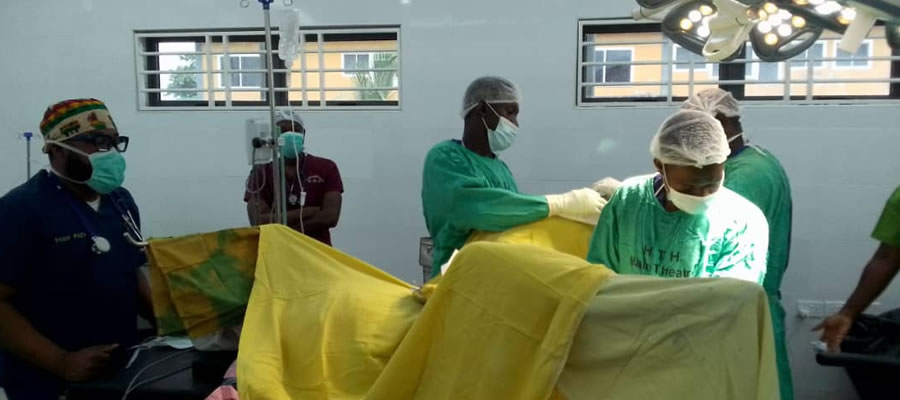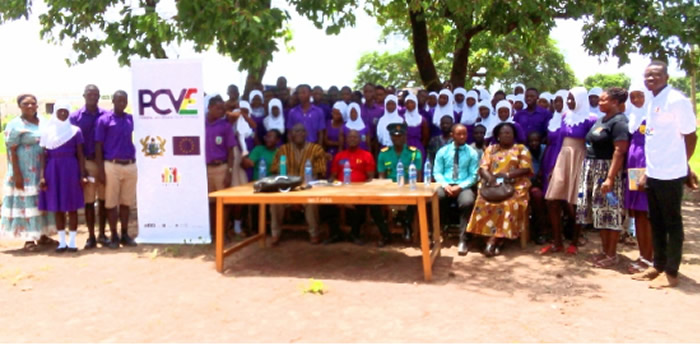
Introduction
Agriculture has for many decades dominated the economy of the country and contributed more than one-third of gross domestic product. The economy of the Upper West Region is mainly agrarian, with the people engaged in the cultivation of food crops (grains such as millet, sorghum and maize; roots and tubers, particularly yams and legumes, including groundnuts and beans. Households in the region are also actively engaged in rearing livestock, including cattle and ruminants.
Households in Agriculture
Table 11.1 shows that a total of 84,931 households were engaged in agricultural activities in the region. More than 90 percent (91.4%) of agricultural households in the region are in rural areas. The proportions were similar for districts with both urban and rural households except for Wa Municipal, where a little more than half (52.9%) of the agricultural households were in rural areas. About one-fifth (20.4%) of agricultural households in the region have household size of 10 persons or more. In Wa Municipal, 27.2 percent of households engaged in agriculture recorded household size of 10 persons or more. In general, households engaged in agriculture in the region have large sizes, averaging 6.9 persons.|
Agricultural Households by Locality and Sex
About 77 percent of households engaged in agriculture in urban areas are male-headed households and 80.8 percent of these households are in rural areas, (Table 11.2). In all districts except Sissala East (69.3%), the proportion of male-headed households engaged in agricultural activities was more than three times that of female.
Types of Agricultural Activity by Household
More than 95 percent of households engaged in agricultural activity were involved in crop farming while 63.7 percent were also engaged in livestock rearing (Table 11.4). Only a small proportion (1.9%) was engaged in tree growing.
For Wa Municipality, nearly four percent of households were engaged in tree growing, substantially more than any other district. Lawra (0.2%) recorded the smallest proportion of households engaged in tree growing. Fish farming is not common in the region as very low proportions of households are engaged in this activity.
About 81 percent of male-headed households were engaged in crop farming compared to about 19 percent of female-headed households (Table 11.5). In the Wa East district, about 92 percent of male-headed households were engaged in tree growing. A relatively high proportion of female-headed households (38.0%) in the Nadowli district were involved in tree growing compared to the other districts. Fish farming in the region is mainly the preserve of male-headed households.
Table 11.6 shows that 78.3 percent of male-headed households in urban areas are engaged in various agricultural activities compared to 21.7 percent of females. Fish farming in urban areas is carried out only in Wa Municipal and Sissala East districts. In the rural areas, except for tree growing, more than 80 percent of male-headed households are engaged in agricultural activities compared to nearly 20 percent of female-headed households. Compared to the proportion of female-headed households (7.1% and 8.3% respectively) involved in tree growing in rural Wa Municipal and Wa East, the proportion of men (92.9% and 91.7%) is far higher. One-fifth of female-headed households in the Nadowli and Jirapa districts are engaged in fish farming.
Types of Crops cultivated by Households
Crops cultivated by households in the Upper West Region are mainly cereals, roots and tubers and legumes. Households are either engaged in mono-cropping (single crop cultivated on farmland), mixed cropping (more than one crop on the same farmland) or crop rotation.
About 84 percent of households engaged in agro-forestry (tree growing) in the region were located in rural areas (Table 11.7a). In the case of legumes, the proportion of households in the rural areas who cultivated beans and groundnuts was 97.1 percent and 93.1 percent respectively. Only 15.0 percent of households engaged in cultivating carrots lived in urban areas.
Maize and millet, the two major cereal crops grown in the region, were cultivated by a high proportion of households in rural areas (93.3% and 96.2% respectively). The other crops involving the highest number of farmers were yam and rice, each cultivated by more than 95 percent of households living in rural areas (Table 11.7b).
Livestock Rearing by Household
According to Table 11.8, more than 93 percent of livestock holdings in the region were in rural areas. Most cattle (95.5%), goats (95.0%), chickens (93.0%) and pigs (92.2%) were in rural areas while 32.7 percent of rabbits were in urban areas. The picture was the same for the number of livestock in the region where more than 90% of most livestock were reared in rural areas.
Date Created : 11/29/2017 7:48:18 AM












 facebook
facebook
 twitter
twitter
 Youtube
Youtube
 +233 593 831 280
+233 593 831 280 0800 430 430
0800 430 430 GPS: GE-231-4383
GPS: GE-231-4383 info@ghanadistricts.com
info@ghanadistricts.com Box GP1044, Accra, Ghana
Box GP1044, Accra, Ghana